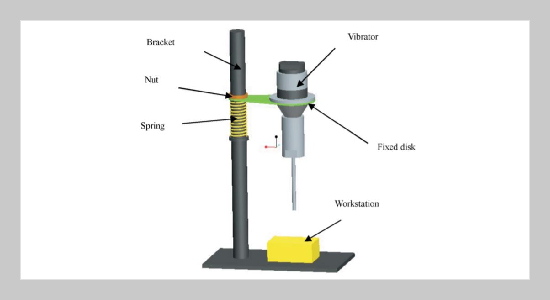Hongbing Wang This email address is being protected from spambots. You need JavaScript enabled to view it.1,2 and Chunhua Sun1,2 1Department of Mechanical & Electrical Engineering, Suzhou Vocational University, Suzhou 215104, P.R. China
23C-Product Intelligent Manufacturing Engineering Technology Research and Development Center, Suzhou 215104, P.R. China
Received:
April 9, 2018
Accepted:
March 20, 2019
Publication Date:
June 1, 2019
Download Citation:
||https://doi.org/10.6180/jase.201906_22(2).0005
A portable effective ultrasonic drilling equipment was designed and fabricated to drill holes of hard and crisp materials such as dirt, ceramic tile, limestone, granite, basalt, sandstone and glass. The equipment included an ultrasonic generator, an ultrasonic vibrator and a tool part. Through finite element sensitivity analysis and optimization, the ultrasonic vibrator had proper first longitudinal mode frequency and larger amplitude ratio. After optimization, the first order longitudinal mode frequency was changed from 20.35 to 21.63 kHz and the ratio was changed from 60.1 to 186.8. Through modal test, distribution of the velocity along the axial direction of the vibrator was gotten when the vibrator was applied by the exciting signal at 80 Vp-p and 21.45 kHz. The test results indicated that the velocity of the vibrator’s tip was the maximum, reached about 580 mm/s and the velocity of the vibrator’s end was about 0, and the ultrasonic vibrator had larger amplitude ratio. The modal results were accorded with the finite element analysis. Seven hard and crisp materials were selected to drill holes using the equipment. The drilling experiment demonstrated that the rate of drilling Diorite was about 28.26 mm3/min with emery mixed with water used as the working abrasive. The analysis and experiment indicated the equipment had the advantages of fast processing speed, stable performance, small volume and portability.ABSTRACT
Keywords:
Ultrasonic Drilling, Vibrator, Amplitude Ratio, Sensitivity Analysis, Optimization
REFERENCES









